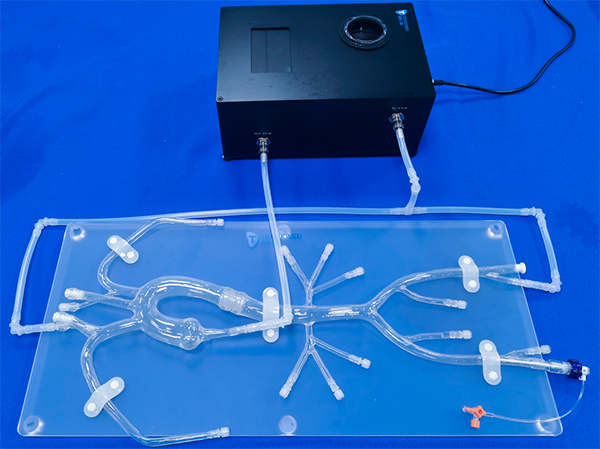Thoracic endovascular aortic repair (TEVAR) is a minimally invasive procedure that has revolutionized the management of thoracic aortic diseases. It offers a less invasive alternative to traditional open surgery, providing numerous benefits to patients in terms of reduced morbidity, faster recovery, and improved outcomes. This article explores the key aspects of TEVAR and highlights its significance in the field of aortic disease management.
Procedure Overview
TEVAR involves the placement of a stent graft within the diseased segment of the thoracic aorta to reinforce the weakened vessel walls and redirect blood flow. Under fluoroscopic guidance, a catheter is inserted through a small incision in the groin and advanced to the target site within the aorta. The stent graft, compressed within the catheter, is then deployed, expanding to conform to the aortic anatomy. This effectively excludes the diseased section, restoring proper blood flow and preventing further expansion or rupture.
Advantages of TEVAR
1.Minimally Invasive: Compared to open surgery, TEVAR requires smaller incisions, resulting in reduced trauma, less blood loss, and decreased postoperative pain. It offers a viable option for high-risk patients who are not suitable candidates for traditional surgery.
2.Faster Recovery: TEVAR significantly shortens hospital stays and enables a quicker return to daily activities compared to open procedures. This translates into improved patient satisfaction and a reduced burden on healthcare resources.
3.Lower Complication Rates: TEVAR has demonstrated lower rates of complications such as stroke, respiratory failure, renal dysfunction, and infection when compared to open surgery. The minimally invasive nature of the procedure contributes to these favorable outcomes.
4.Customized Solutions: Stent grafts used in TEVAR are available in various sizes and configurations, allowing for tailored treatment based on individual patient anatomy and pathology. This flexibility enhances procedural success and long-term durability.
5.Long-Term Efficacy: Studies have indicated that TEVAR provides durable results with low rates of reintervention and excellent long-term survival rates. Regular follow-up imaging is essential to monitor stent graft integrity and detect potential complications.
Conclusion
Thoracic endovascular aortic repair has transformed the management of thoracic aortic diseases, offering a safe and effective alternative to open surgery. With its minimally invasive nature, faster recovery times, and lower complication rates, TEVAR has become the preferred choice for many patients. Ongoing advancements in stent graft technology and procedural techniques continue to enhance patient outcomes and expand the applicability of this innovative approach. As a result, TEVAR has ushered in a new era in aortic disease management, improving the lives of countless individuals worldwide.
Related product: https://www.trando-med.com/vascular-model/cardio-thoracic-vessel/aorta-model-with-transparent-silicone-3d.html
